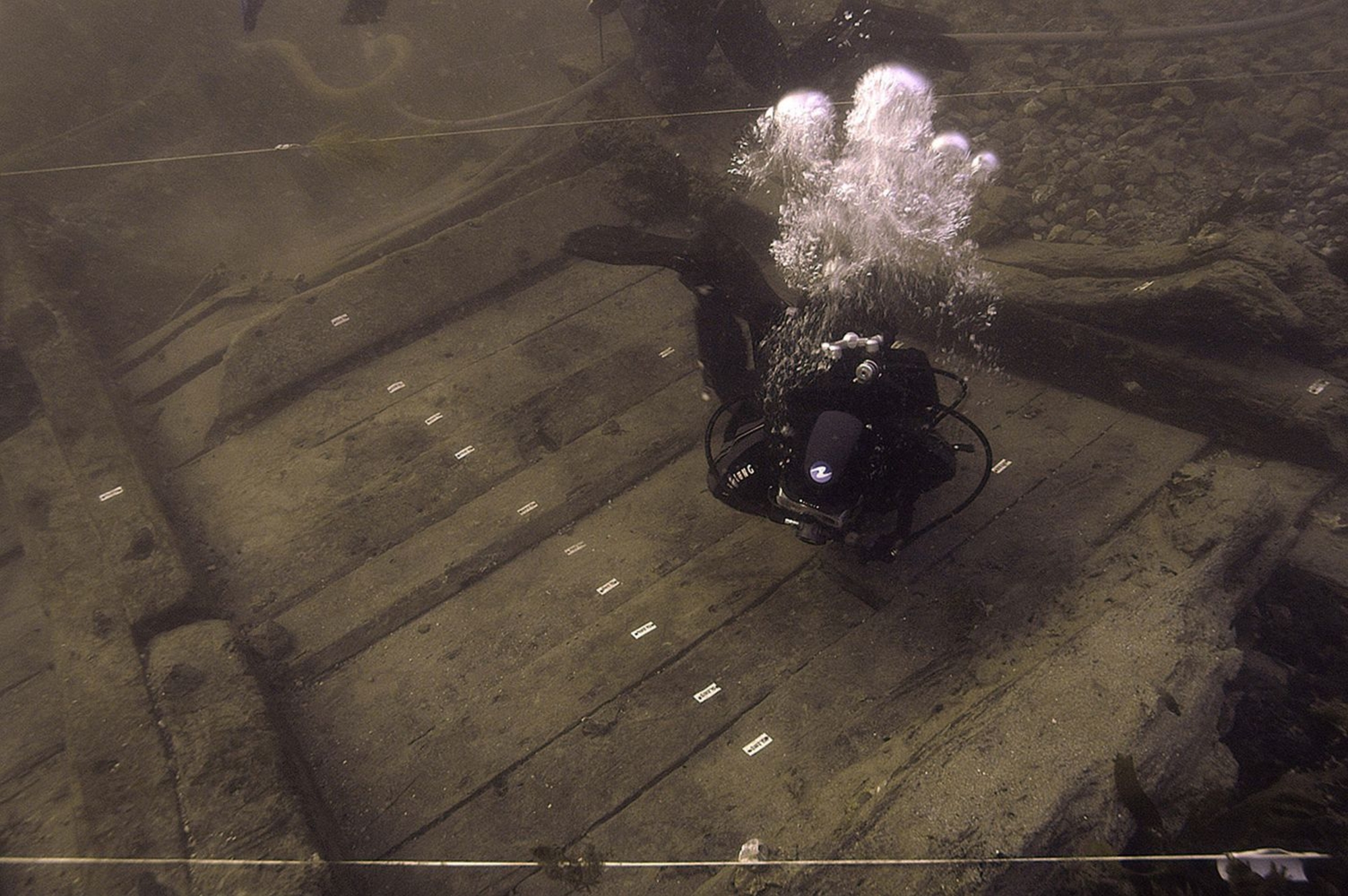
- Home
- Shipbuilding
- The structure of the Aimable Grenot
- The wood of the Aimable
A 36-metre-long section of the framework of the starboard side was studied, or nearly the full length of the ship. It was preserved from the keel to the second deck, a height of 9.5 metres.
There was very selective use of high-quality wood: the keel, false keel, apron, bottom strakes and ceiling were made of beech, while the frames, futtocks, topside strakes, stringers, knees and deck beams were made of oak. The entire construction was solid and carefully-built, but the timber used bears witness to obvious difficulties in obtaining supplies of wood for shipbuilding. The floor-timbers and crutches, assembled from various elements, attest to the rarity of compass timber, while the entire construction made widespread use of young, stressed wood. Old-growth oak trees were, however, used for the riders.
In the lower part of the hull, the double frames were fastened to the planking and ceiling with treenails; higher up, iron nails were also used.
The absence of gun ports at the level of the first deck shows that the ship's cannons were all placed on the upper deck. This gave a larger storage space in the hold and on the first deck.






